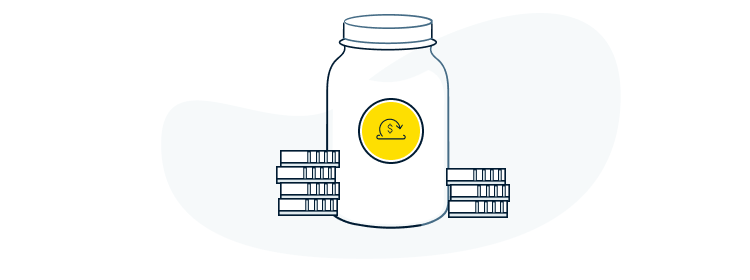Start Growing Your Finances Today
Make sure you've covered off the important stuff and start reaching for the journey ahead.
Tools and Solutions You Might Like
 Start saving for any goal—quickly and easily!
Start saving for any goal—quickly and easily!
NOMI Find & Save is a digital savings account that looks at your spending, finds extra dollars in your cash flow that it thinks you won’t miss and automatically moves them to savings.
 Grow Your RRSP Faster
Grow Your RRSP Faster
See how putting money regularly in an RRSP can grow your retirement savings.
Top Growing Your Saving FAQs
With tuition fees and other expenses spiralling upward, it’s predicted that in 2032 a student’s annual average expenses including tuition fees, books, shelter, food and transportation could be $27,951.1
This is a great question to be asking before you start home-shopping. Knowing what you can afford will help you set a realistic price range so you can balance home ownership with your lifestyle needs.
In general, mortgage lenders will look at the following factors to determine what you can afford
Your annual income and assets (and your spouse/partner’s income and assets, if applicable
Your credit history/credit score
Your debt, including car payments, credit card balances, etc.
The amount of money you plan to put down (your down payment)
Try this quick calculator now to estimate how much home you may be able to afford.
The Registered Education Savings Plan (RESP) is a tax-sheltered plan that helps you save for a child’s post-secondary education. While contributions to the plan are not tax-deductible (these amounts won’t reduce your taxable income in the year you make the contributions), your investment earnings within the RESP grow tax-free.
When the child takes the money out for their education, the money withdrawn is taxed in the student’s hands, often resulting in little or no tax. Read more about RESP Rules and Contribution Limits.
In addition to the tax benefits of an RESP, government grants, bonds and incentives may also be available to help build the child’s education savings even faster.
Knowing exactly how much money you have going out (your spending) vs. coming in (your income) is a great way to identify opportunities to save more and spend less. There may be a monthly subscription for an app or a magazine that you don’t really use. Or, maybe you really do have an extra $50 you could afford to sock away each month.
If spreadsheets and math aren’t really your thing, there are tools that can help make budgeting simple.
For example, if you’re an RBC client, you can use NOMI Budgets on the RBC Mobile app at no additional cost. NOMI Budgets takes the math out of managing your money by doing the thinking for you. It recommends personalized budgets for you based on your spending and helps you stay on track by sending you updates along the way.
Learn more about NOMI and NOMI Budgets or check the RBC Mobile app to get started.
Discover and Learn
Three Simple Ways to Keep your Money Safe from Fraud and Scams
7 Simple Ways to Calm Racing Thoughts and Focus More on You
Mortgage 101: Finding the Right-sized Mortgage for You
Things our lawyers want you to knowThings our lawyers want you to know
In order to ensure that your call is properly directed, please follow these instructions:
Your RBC Advisor can assist you with:
- Call 1-888-769-2566 8-8 ET , Monday to Friday
- Mention that you are calling about your ‘company plan’
- When asked if you are an existing client, answer ‘Yes' if you are an existing RBC client and ‘No' if you are not.
- If you answer 'Yes', you will be asked to enter your client card number to help our advisors better identify you
- If you answer ‘No’, please have two pieces of government issued identification (such as a driver’s license or passport) with you for our advisors to virtually set up your client file.
Please note, you will also need access to a computer/mobile device and email. Please set aside an hour for this call so that we can fulfill your request safely, by completing it virtually.


